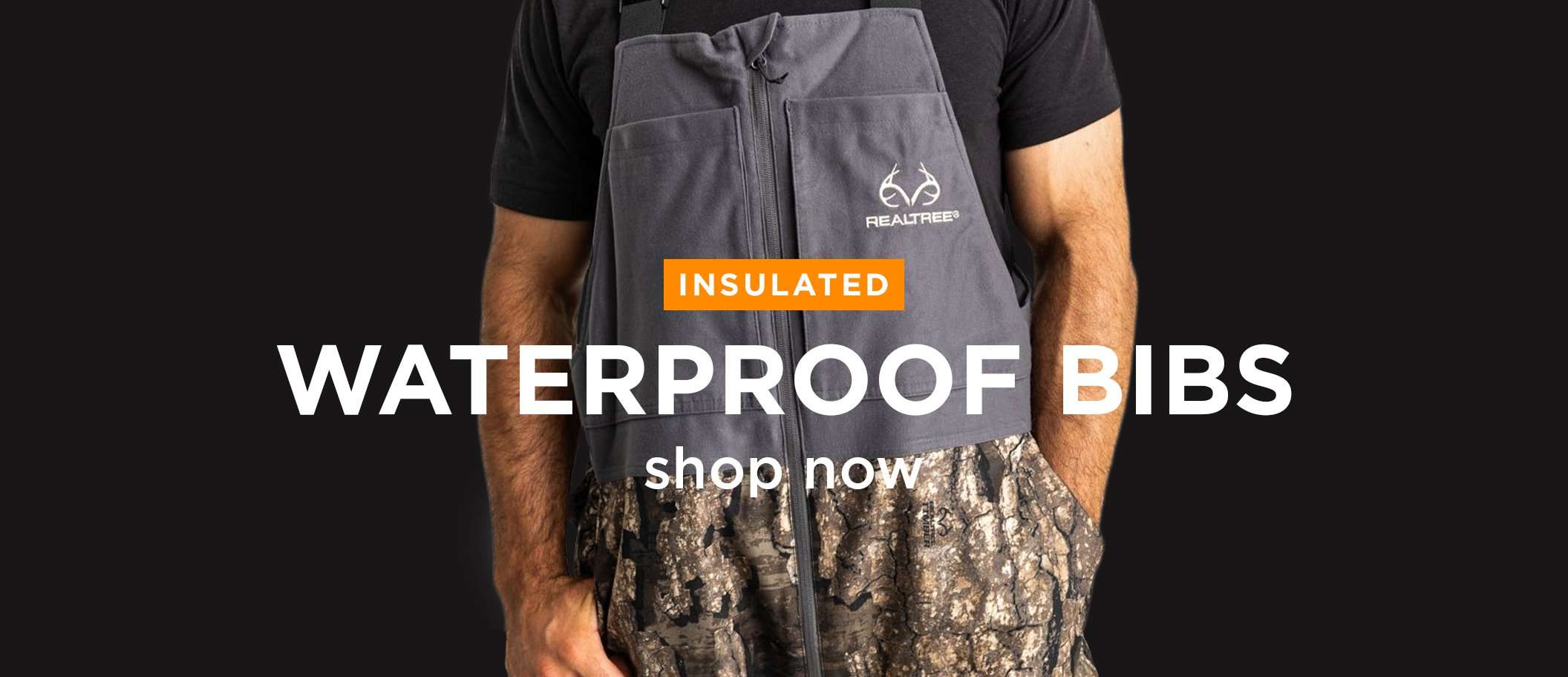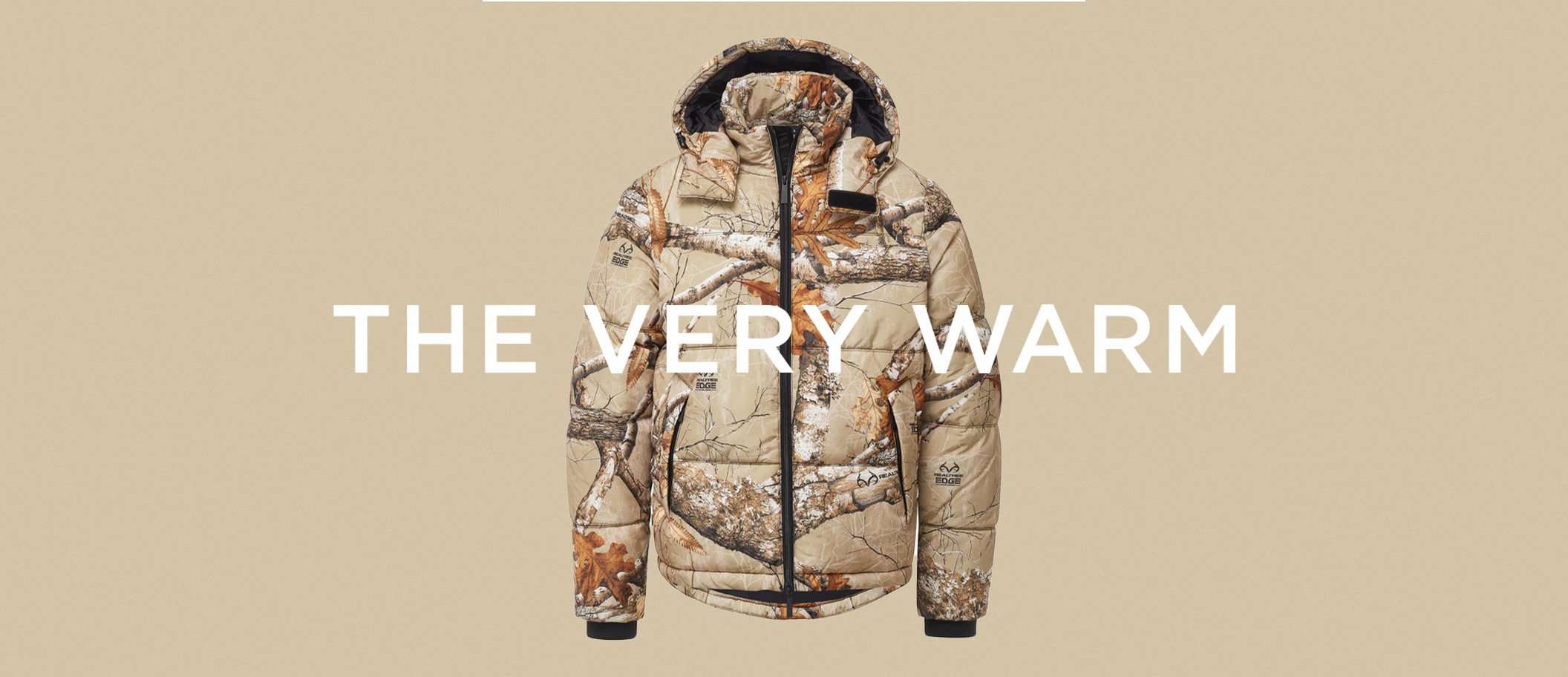Two new products from Work Sharp make it easy to keep your kitchen knives sharp at home or at camp
I spend a lot of time in the kitchen. A great deal of that is spent with a knife in my hand. Using a dull knife is worse than not having a knife at all. The extra time and energy you spend trying to push the dull blade through whatever you are slicing or chopping makes kitchen work a drag. Even worse, dull knives are dangerous. Trying to force a blade through meat or vegetables is a great way to slip and cut yourself.
At home I use a lot of different sharpeners. One of my favorites is my Ken Onion belt system from Work Sharp. But when it comes to camp knives, I don’t always have access to electricity to plug it in. That’s why I was excited when Work Sharp sent me a couple of new products to test. Both make it easy to maintain a constant angle on your blade, the secret to successful sharpening.
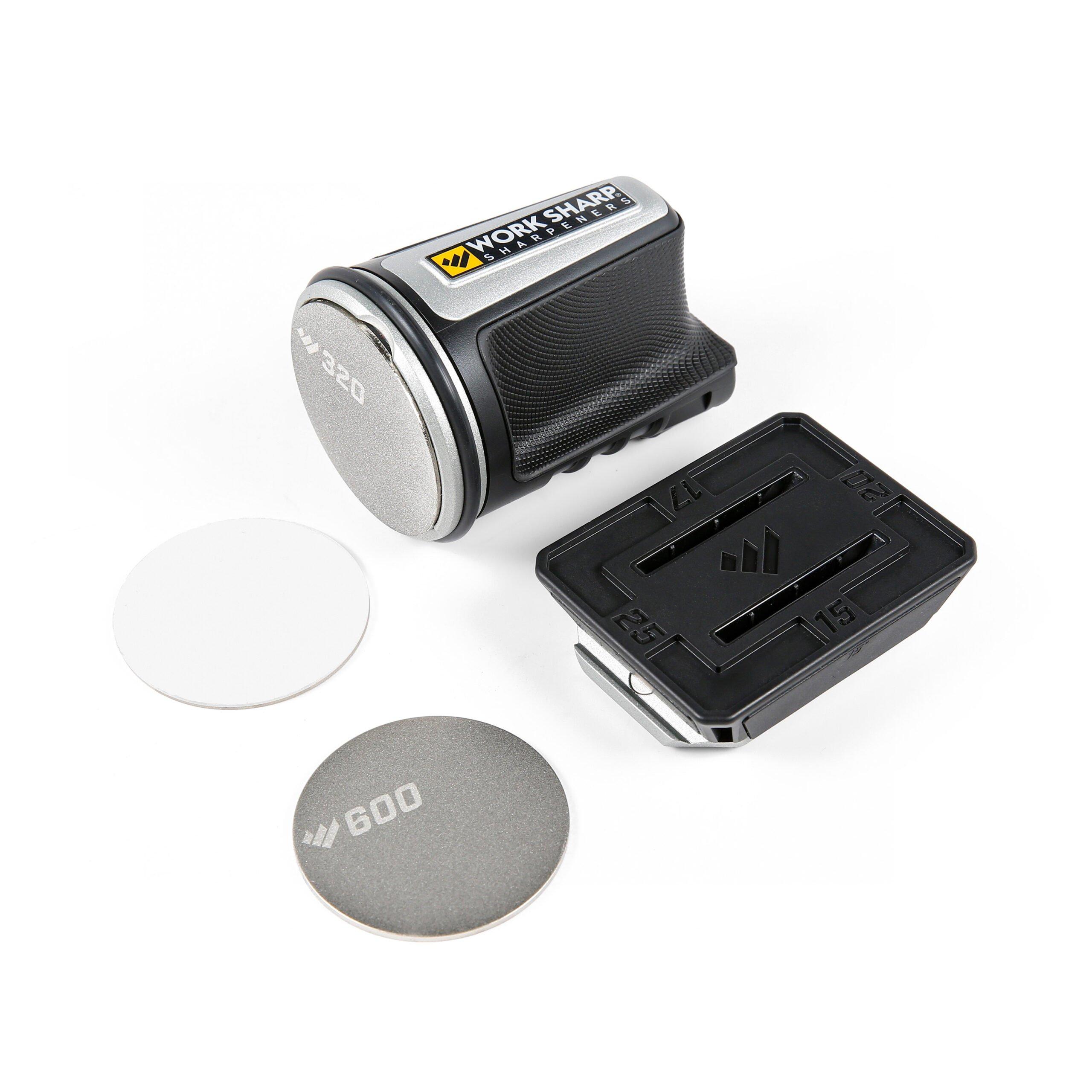
The new Rolling Knife Sharpener from Work Sharp comes with three different grit levels.
The first is the Work Sharp Rolling Knife Sharpener. It’s a handheld manual sharpener that uses a Magnetic Angle Block and rolling abrasive discs to quickly and easily sharpen your knives. The block has four sharpening angles (15, 17, 20, 25 degrees) to sharpen a wide variety of knives to the optimum angle. For my kitchen knives, I like 17 degrees. It leaves a razor-sharp edge that still holds up well to daily use.
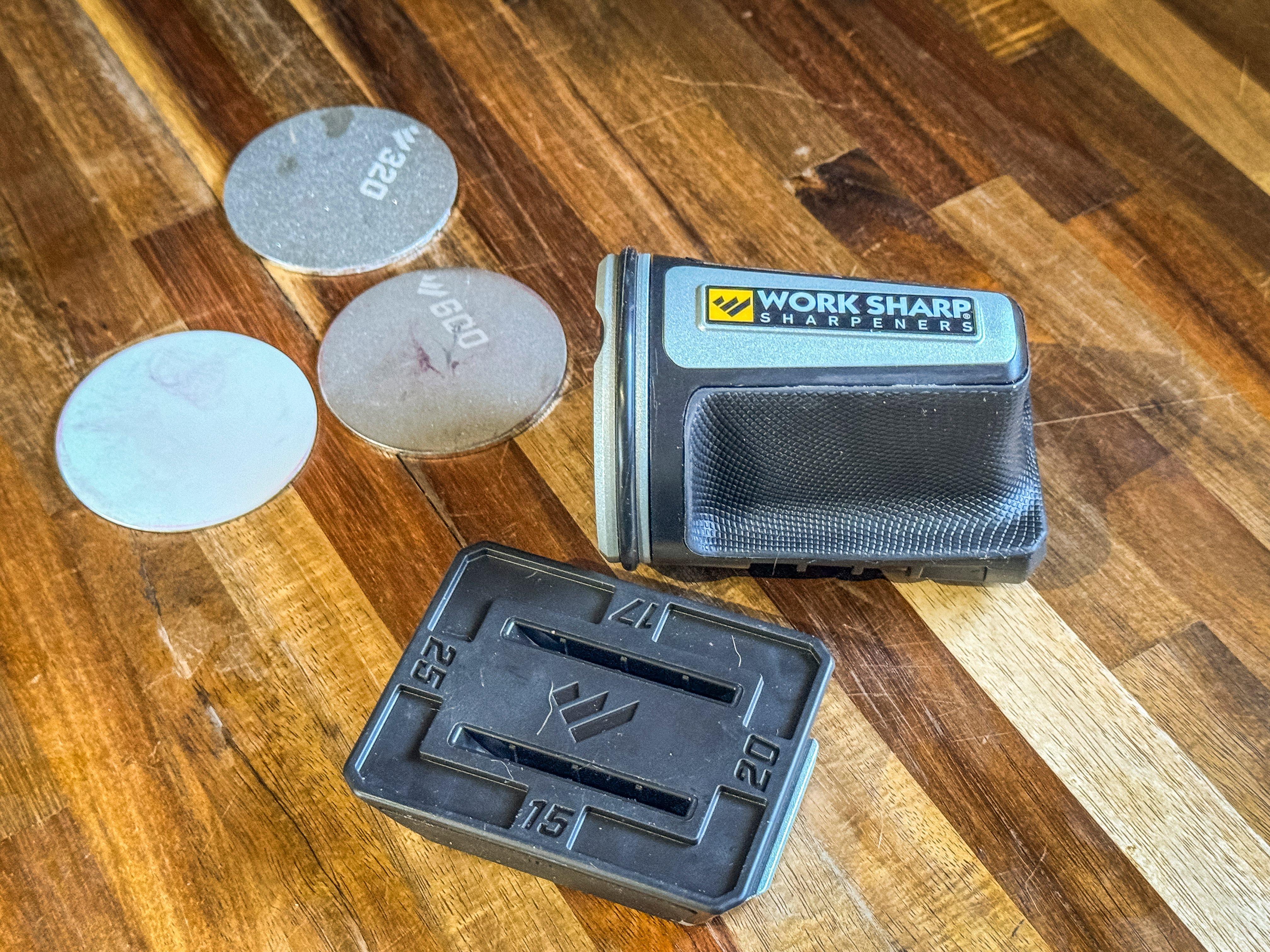
The magnetic block offers four different sharpening angles.
The three abrasives—coarse 320-grit diamond, fine 600-grit diamond, and fine ceramic—will hone and restore your knives back to a razor-sharp edge. Just place your knife against the Magnetic Angle Block at your desired angle. The strong magnet in the block clamps the blade in place. Start with the coarse abrasive and roll it along the cutting edge, then change to the finer abrasives to complete the process. It’s that easy. I made a few passes, then turned the blade to make a few on the opposite side. Keep your pass number even with each coarseness of disc. The number depends on the hardness of the steel in the blade and how sharp it was to begin with. For most of my knives, five to six passes for each disc was plenty. The compact size easily fits into a kitchen drawer or cooking kit.
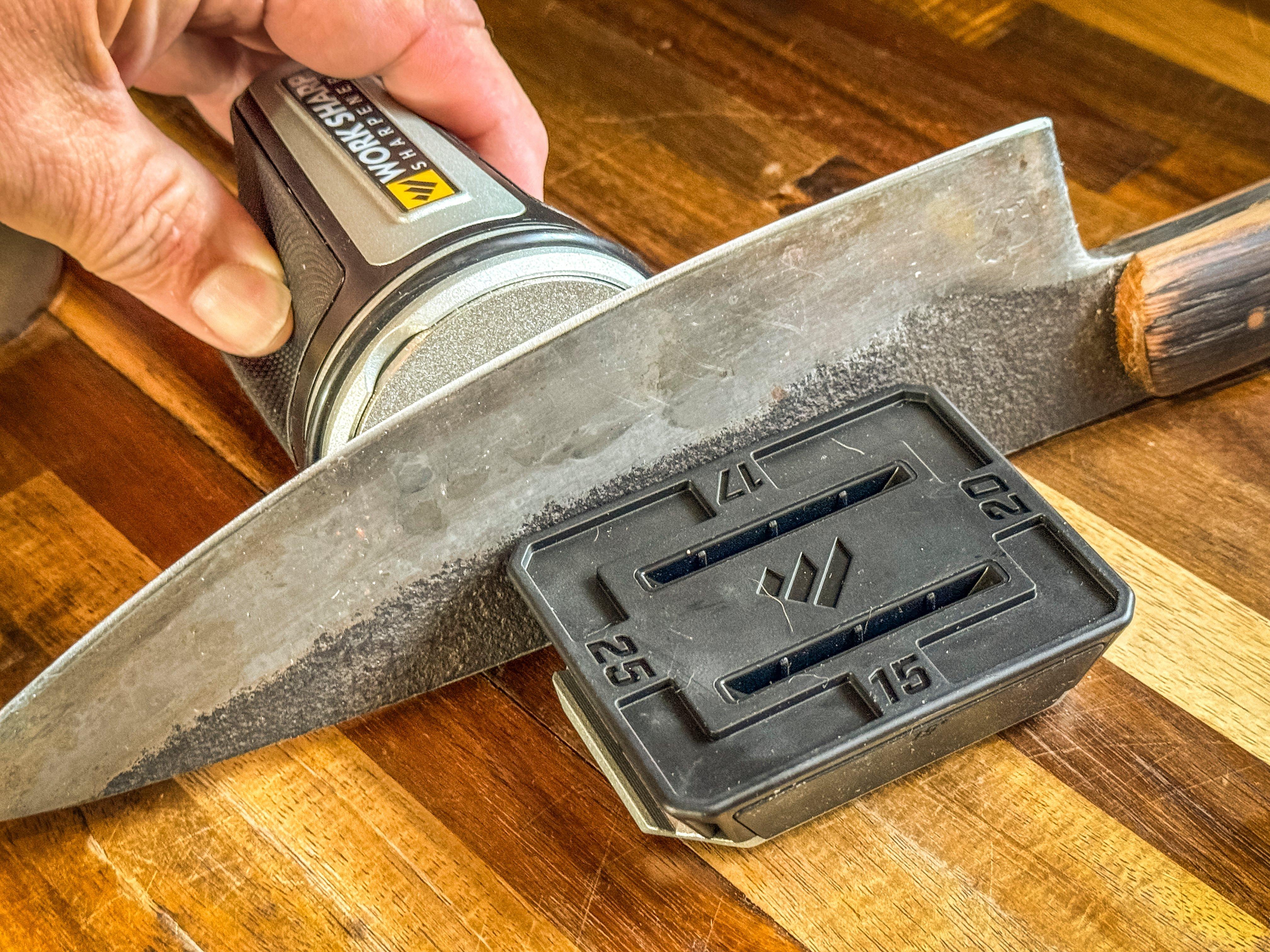
Keep the number of passes for each grit level equal on both sides of the blade.
Next, I tested the Precision Adjust Knife Sharpener. This one is an angle-adjustable system with three abrasives that lets the user make identical passes with the triangle-shaped stone.
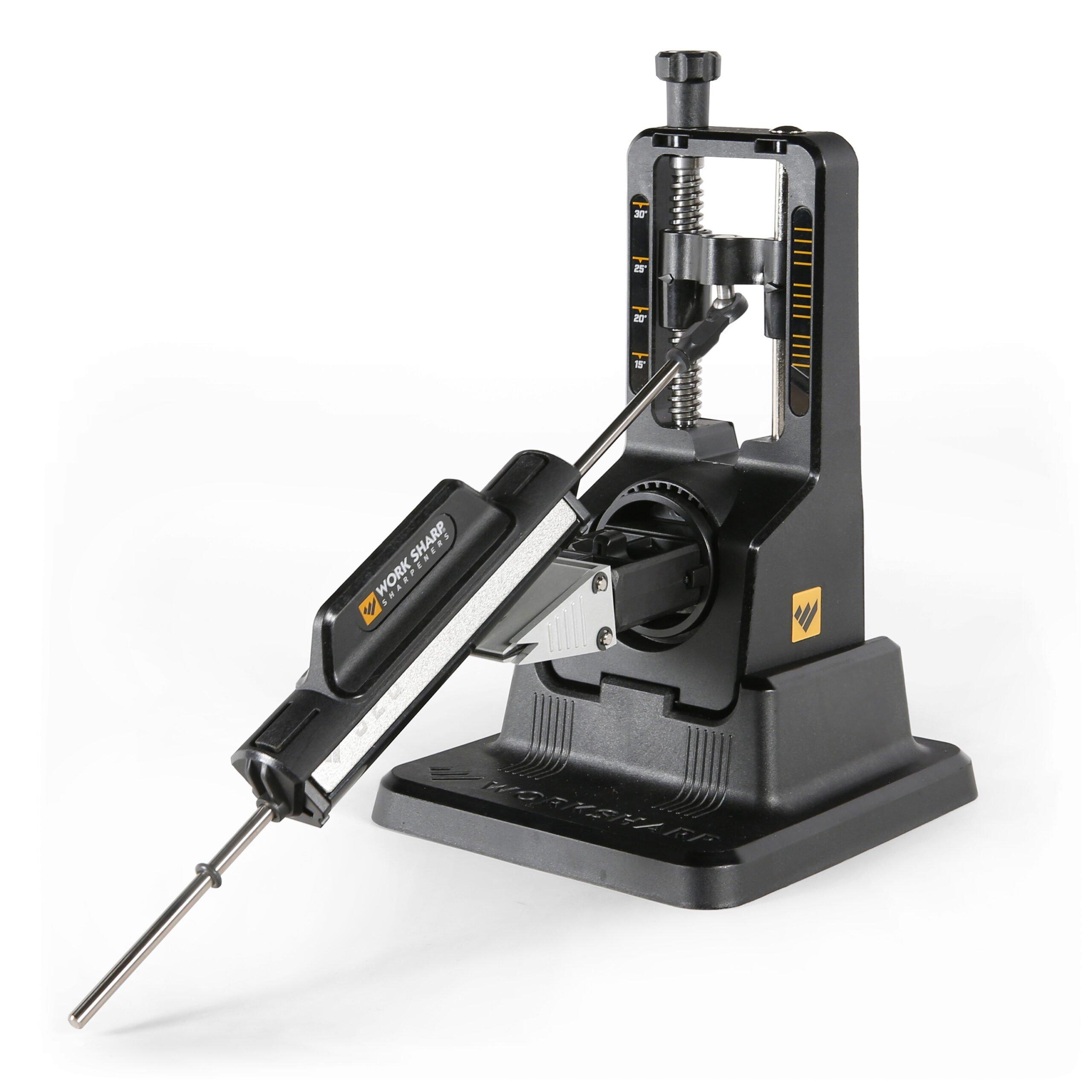
The Precision Adjust Knife Sharpener allows precise control over sharpening angle.
Sharpening angle can be adjusted from 15 to 30 degrees in 1-degree increments. Again, I went with 17 degrees on my kitchen knives and 20 degrees for my field knives. The Tri-Brasive stone includes 320-grit coarse and 600-grit fine diamond plates to quickly restore a sharp edge, and a fine-grit ceramic stone to hone an incredibly keen edge.
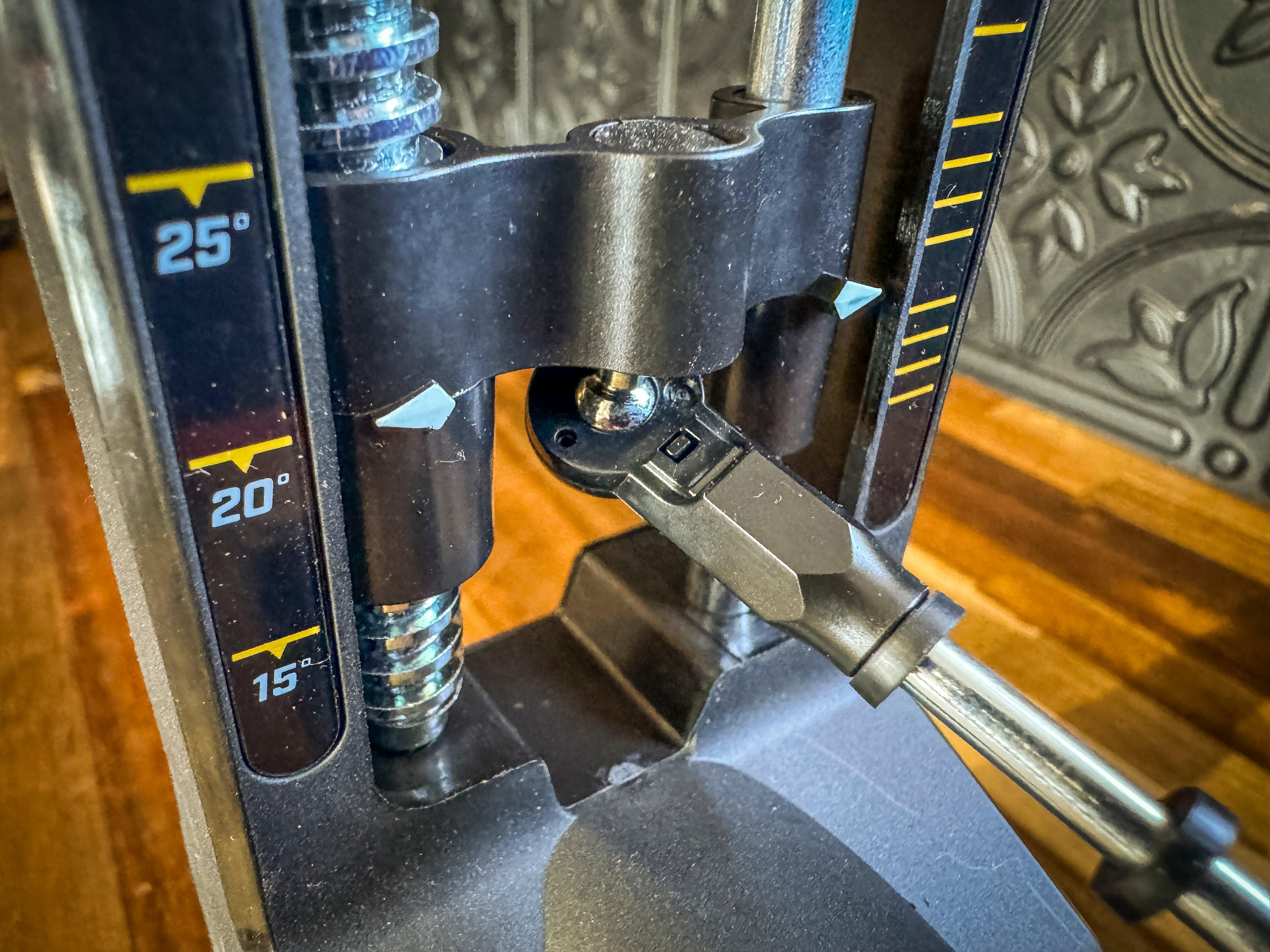
Adjust the blade angle, then lock it into place for professional-level sharpness.
The innovative V-Block Clamp design quickly and safely secures the blade to hold it in the same position with each pass. The clamp rotates 180 degrees at the push of a button to make it easier to do both sides of the blade. The sharpening base provides a stable platform for bench-top sharpening.
This one worked great with small and medium-sized knives, but the clamping system had a little trouble with some of my larger heavy kitchen blades. Longer knives also had an issue with having enough height to fully turn the blade to sharpen both sides. Moving the base to the edge of the counter made rotating even the larger blades 180 degrees easy.
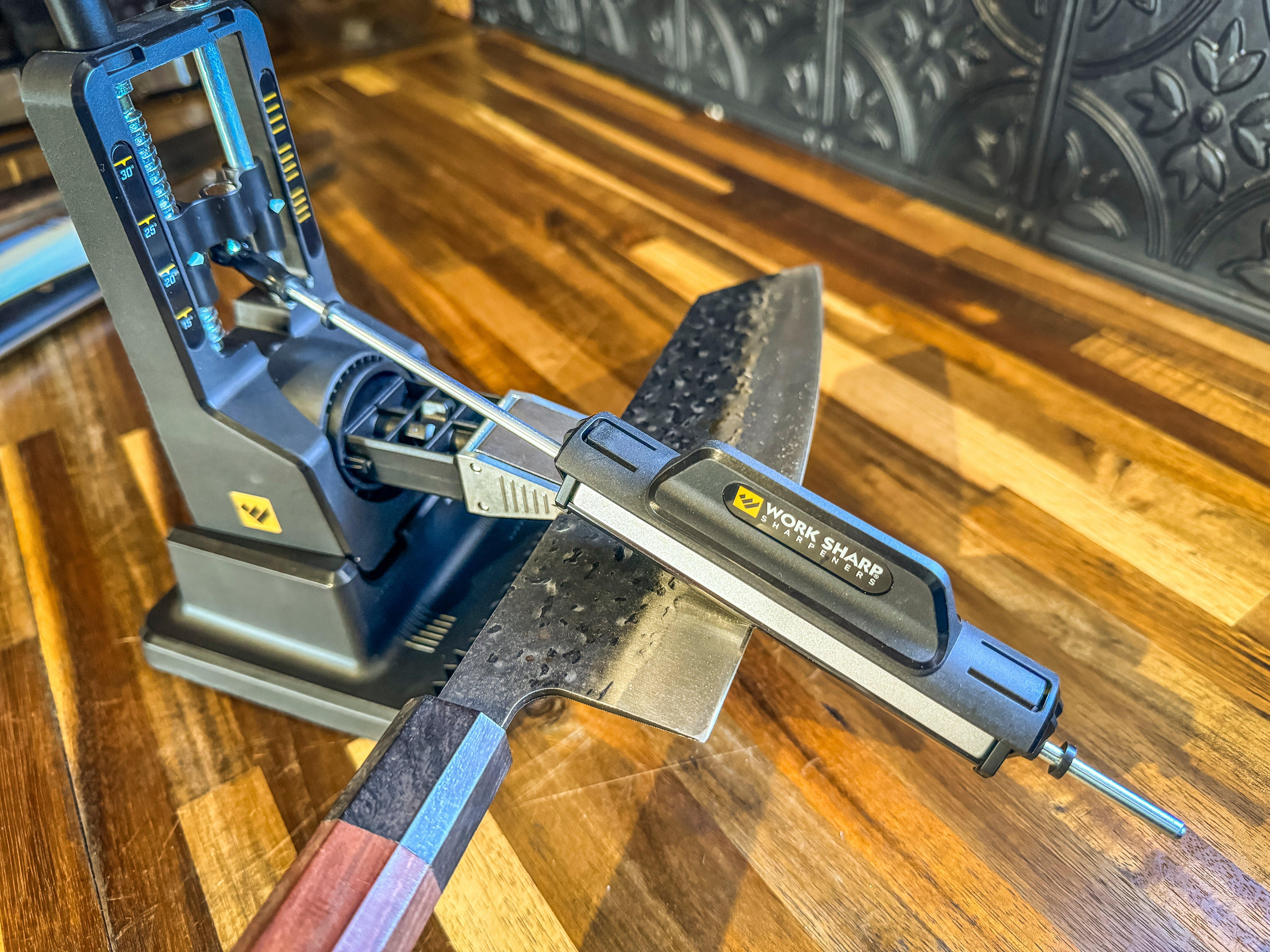
Simply push the button and rotate the blade 180 degrees for easy sharpening of both sides.
Both of these new systems are perfect for everything from quick touch-up jobs at camp to complete restoration of a damaged edge. Since they work without electricity, you can use them even in the backcountry. Do they put as good an edge on as the belt system? It’s close. It does take a little longer with these to get the same results.
One tip for razor-sharp knives is to run your blade over a leather strop once you finish with the stones. This works for any method of sharpening. The leather polishes the edge, removing any remaining imperfections. You can use something as simple as the back side of a leather belt, but I keep a dedicated strop of thick leather adhered to a wooden block in my sharpening kit. Some honing compound rubbed onto the leather speeds and improves the process, and you can’t really do that with the belt you plan to wear the next day.
To strop, simply lay the blade on the leather at the same angle you sharpened it at. Slide the blade away from you in a sweeping motion so that the entire length makes contact with the leather. Do this an equal number of times on each side of the blade, taking care to always maintain the same angle. You will notice the edge of the blade start to shine. Old-time butchers and knife sharpeners refer to this as a mirror edge and didn’t consider their knives fully sharp without it.
Once you have your edge done to your desired sharpness, maintain it by running the blade over a sharpening steel a few times before and after each use. As with all sharpening, maintain the same angle and slide the edge against the steel an equal number of times for each side. Don’t worry about being fast, just maintain the angle. Using a steel helps keep the thinnest leading edge of the blade, the part that does all the work, aligned and straight. Otherwise, that super thin edge you worked so hard to achieve will roll to one side or the other with use, leaving the knives feeling dull.




